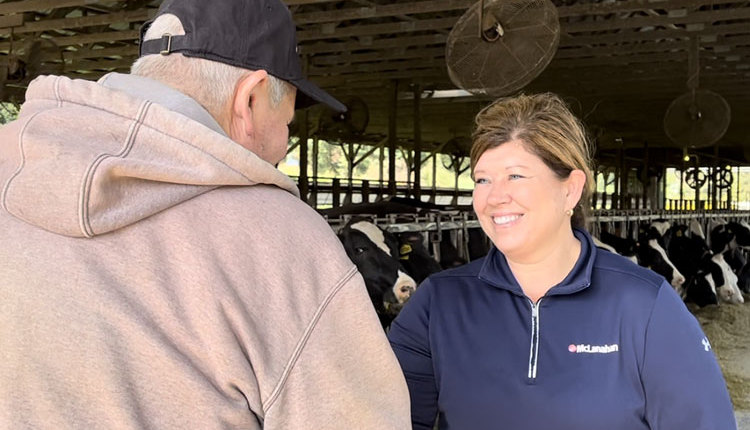
Sand bedding and dairy cow comfort go together like peas and carrots.
But not just any sand will do. There may be subtle or substantial differences in sands depending on the source.
Follow these suggestions to make sure the sand you select offers a comfortable place for cows to lie while providing the drainage necessary to keep stalls cleaner and drier for longer and allowing for efficient removal from manure prior to storage or anaerobic digestion.
Set goals
Base your sand purchase decision on how you will incorporate sand into your dairy management system.
Will you separate the sand for recycling, or will you need it to stay in suspension throughout your entire system and not be reused?
Your answer affects the optimal weight, density and particle size of your target sand, as well as how you source it.
The important thing to remember is that not all sand is created equally, so be aware of what you are getting with your sand purchases.
Sand makeup is not the same
Depending on your location, you likely have a few choices when it comes to sand purchases. Ideally, seek to source what’s known as 30x50 (silica sand), meaning it’s made up of particles 30 to 50 microns in size.
This sand fits in with most manure-handling systems and budgets and contains a desirable mix of individual grains of sand.
Washed concrete sand meets these criteria and is generally the preferred type of sand bedding for most farms. It is widely available and contains a good mix of particle sizes ideal for cow comfort, cleanliness and sand separation.
Concrete sand is characterized by the American Standard for Testing Materials specification ASTM C-33. It is also known as construction sand, torpedo sand or 2NS.
Drainage matters
Next, seek sand that contains minimal fine material, which helps it stay loose in the stalls and readily drain away urine and dripped milk that can lead to the growth of mastitis-causing bacteria.
Drainage is important because, over time, bedding quality decreases as it becomes contaminated with urine, milk and feces. These bedding contaminants are associated with increased organic matter and decreased dry matter, all of which can compromise cow health and comfort.
Researchers suggest cows should be bedded with sand that contains less than 3 percent organic matter and more than 95 percent dry matter. 1
Clean, dry beds are more comfortable for cows, and more comfortable stalls lead to cows experiencing longer bouts of lying time. As a general rule, the more time cows spend lying down, the more milk they make, adding to your farm’s profitability.
Economic factors
Given the rising cost of transportation, most dairies are interested in nearby sand sources. In some cases, this is an excellent option.
Keep in mind local sand may contain undesirable levels of too-fine or too-coarse particles, decreasing cow comfort and sand recovery efforts. It may also contain high concentrations of organic matter and bacteria, defeating the purpose of bedding with sand.
Even after finding and purchasing from a reliable source, it is important to periodically to test your sand to ensure the quality has not changed.
Regardless of sand origin, there are always costs involved in moving sand, whether your source is near or far.
Your dairy must handle and haul the sand to its facilities even from an owned pit, meaning your farm incurs fuel, labor and depreciation costs. Additionally, the sand must be taken out of storage facilities, incurring labor, fuel, equipment and depreciation costs during these activities, too.
To sum it up, keep the basics of cow comfort in mind when making sand selections, as well as important sand factors like source, particle size, proximity and price. Your cows do notice the difference in sand sources.
Learn more about the importance of sand quality.
[1] Cardoso P, Rivelli I. 2015. Bedding Quality is Associated with Milk Quality in Illinois Dairy Farms. University of Illinois. Available at: https://dairyfocus.illinois.edu/newsletter-issues/bedding-quality-is-associated-with-milk-quality-in-il-dairy-farms/#:~:text=Cows%20should%20be%20bedded%20with,when%20they%20are%20deep%20bedded.






